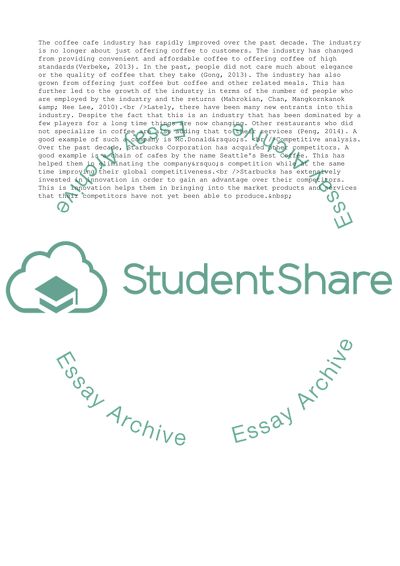Cite this document
(“Starbucks Company: strategic management Research Paper”, n.d.)
Starbucks Company: strategic management Research Paper. Retrieved from https://studentshare.org/management/1658904-starbucks-company-strategic-management-research-report
Starbucks Company: strategic management Research Paper. Retrieved from https://studentshare.org/management/1658904-starbucks-company-strategic-management-research-report
(Starbucks Company: Strategic Management Research Paper)
Starbucks Company: Strategic Management Research Paper. https://studentshare.org/management/1658904-starbucks-company-strategic-management-research-report.
Starbucks Company: Strategic Management Research Paper. https://studentshare.org/management/1658904-starbucks-company-strategic-management-research-report.
“Starbucks Company: Strategic Management Research Paper”, n.d. https://studentshare.org/management/1658904-starbucks-company-strategic-management-research-report.


